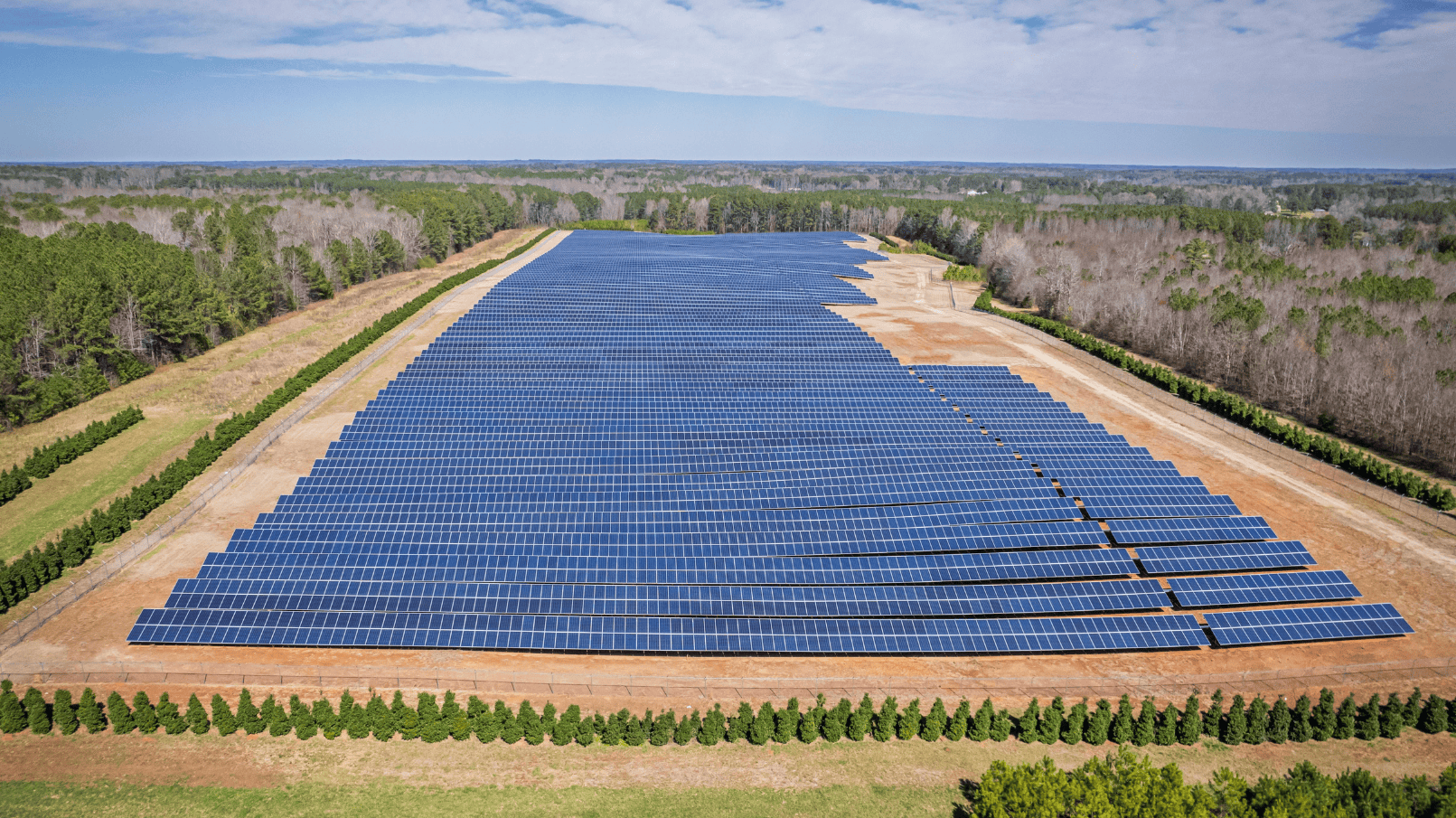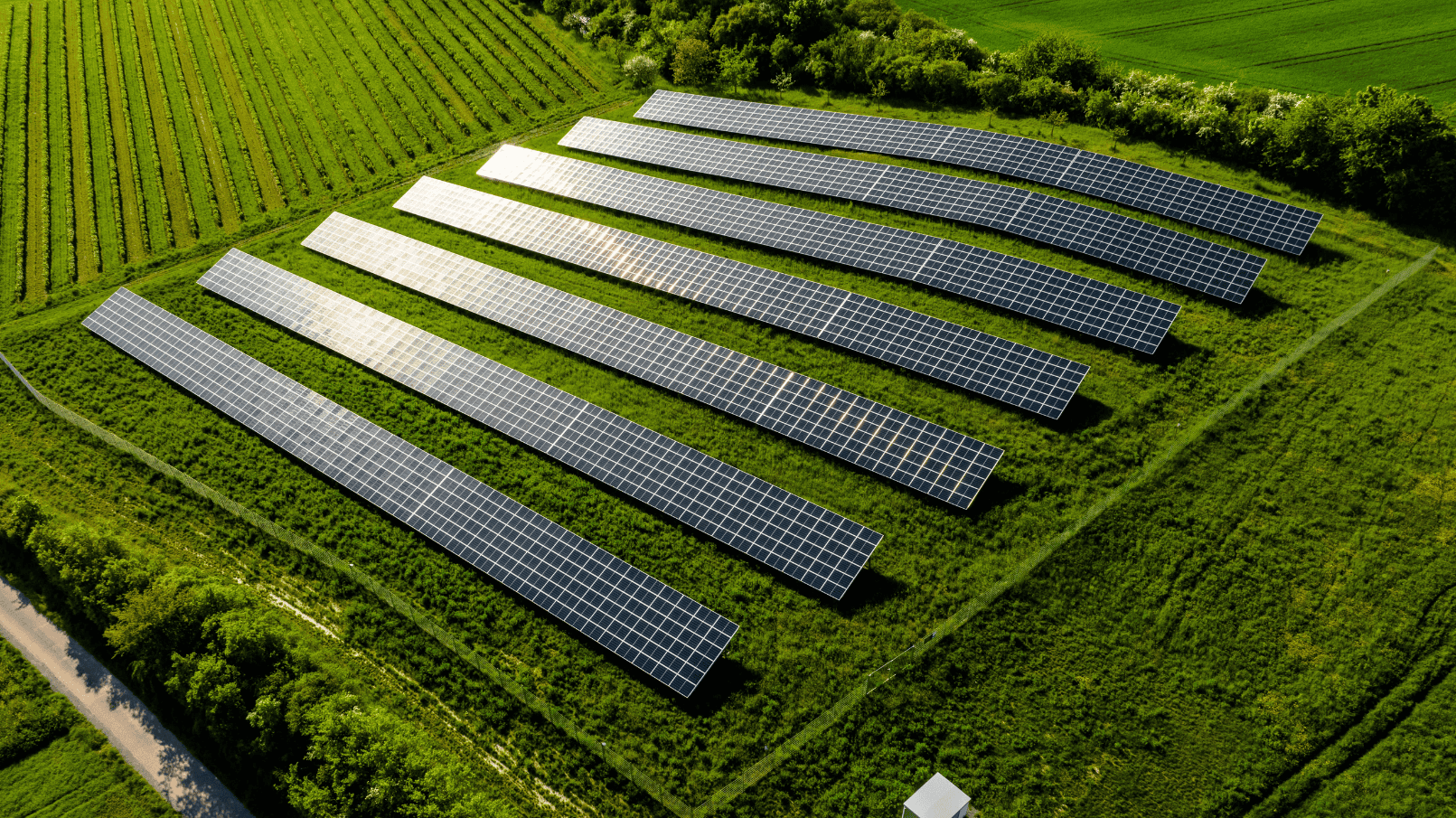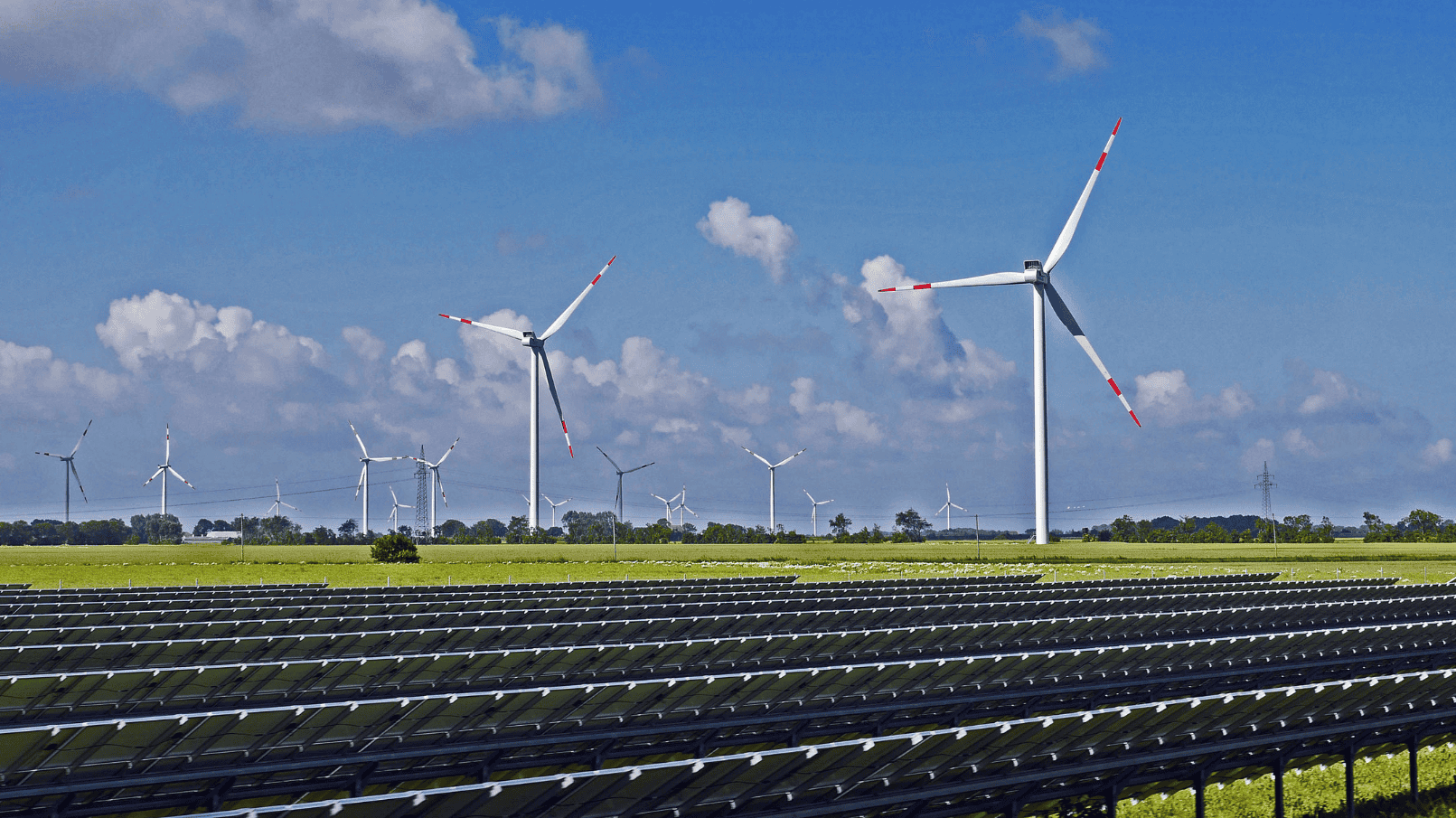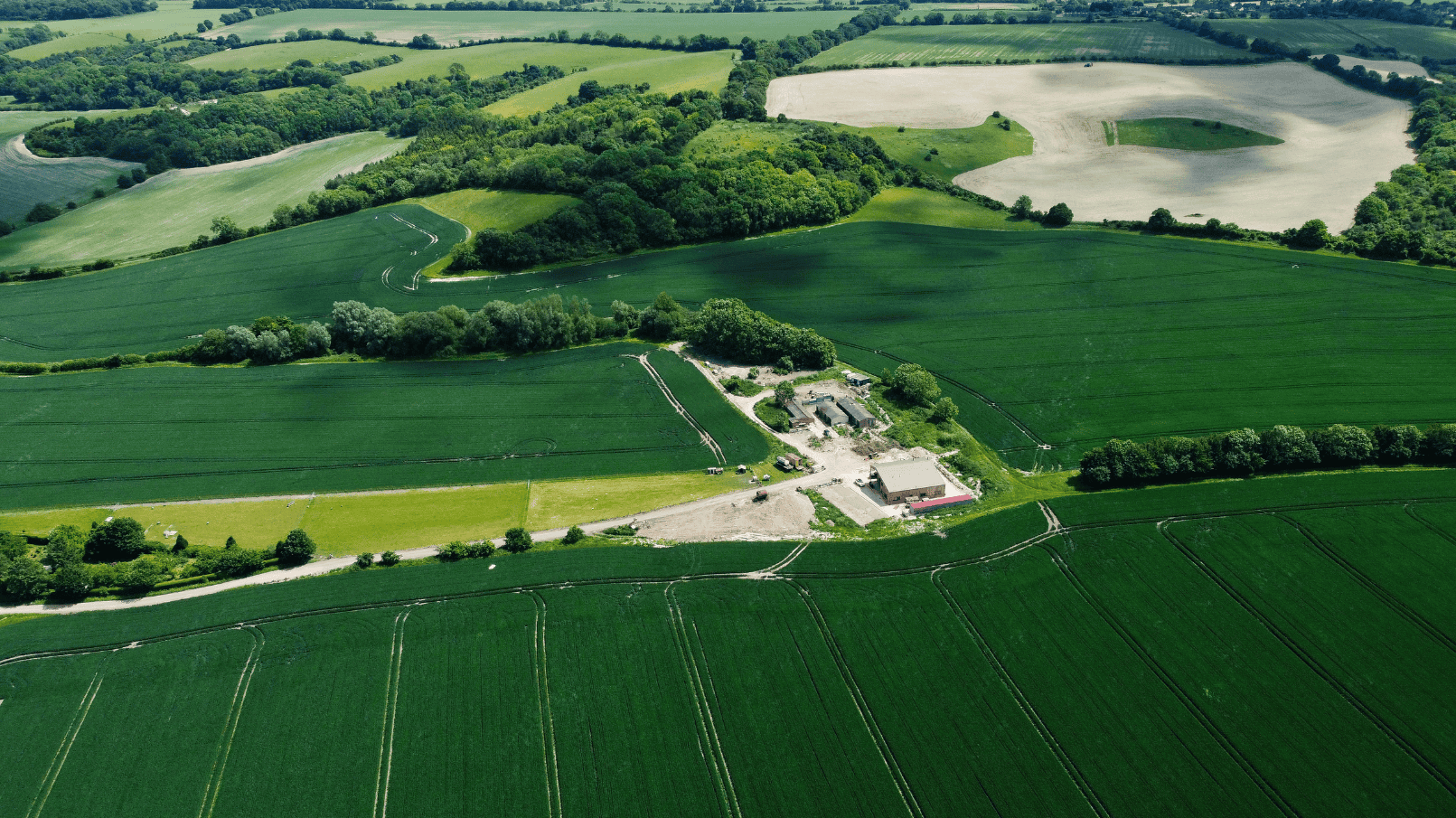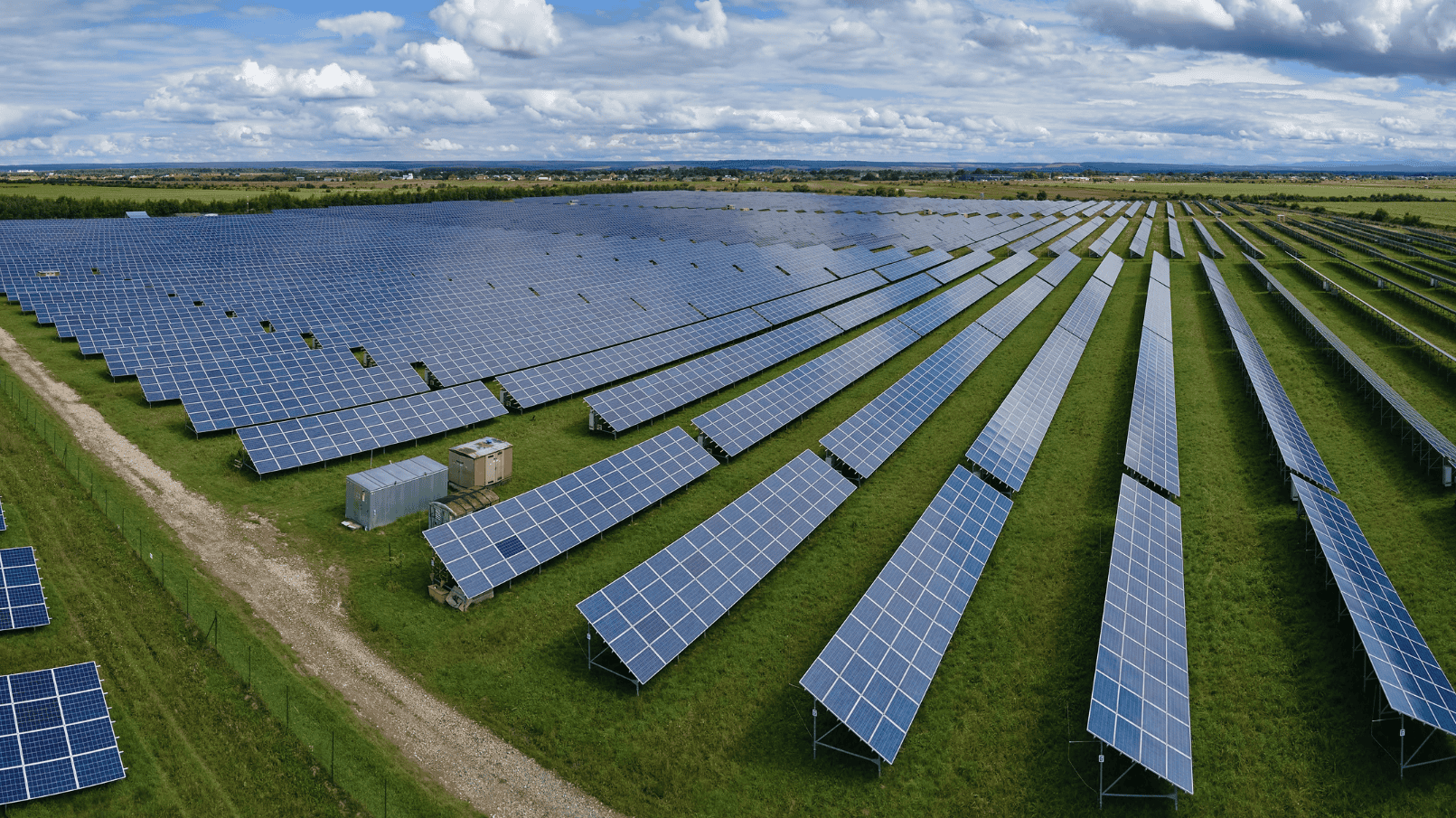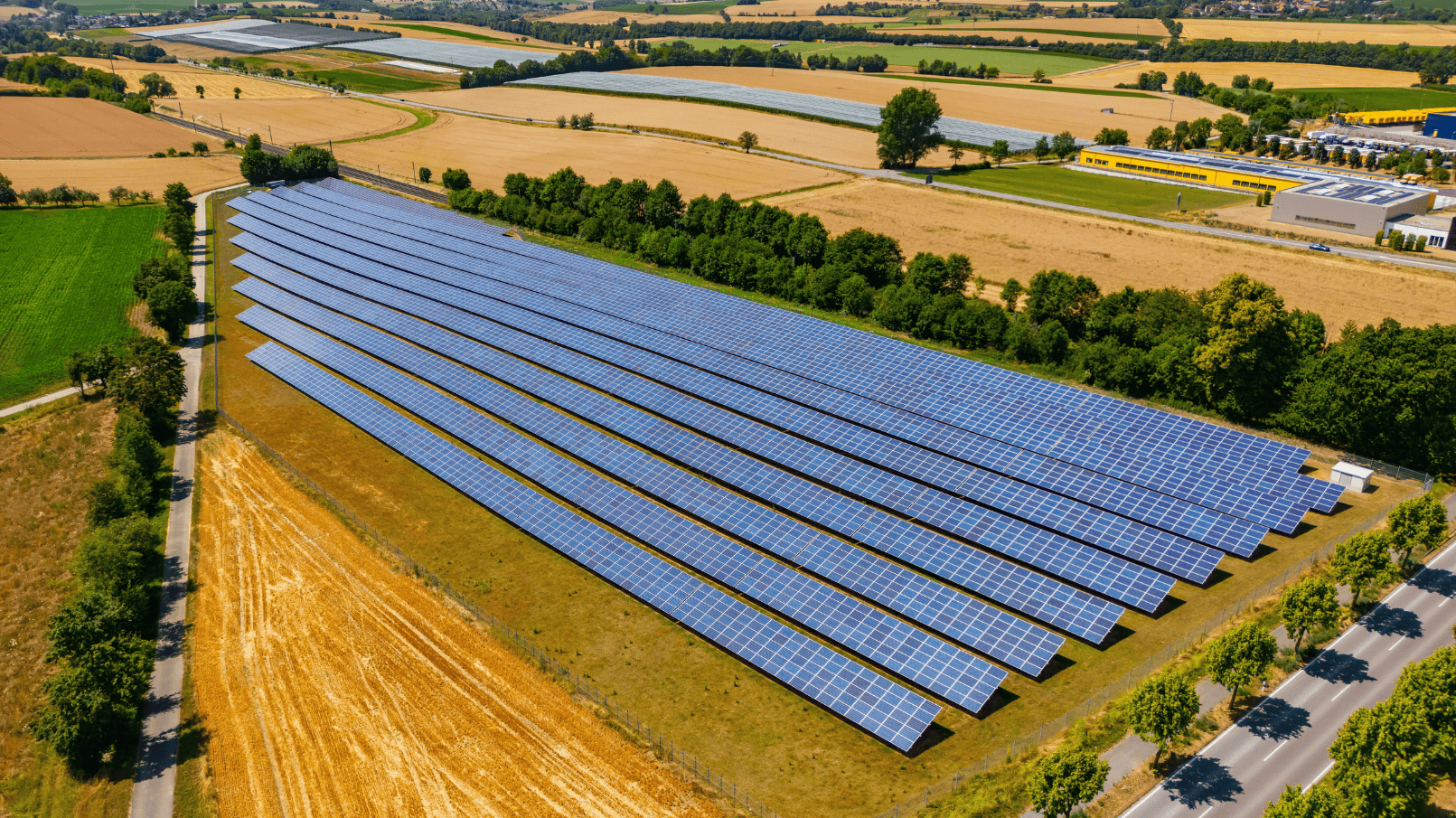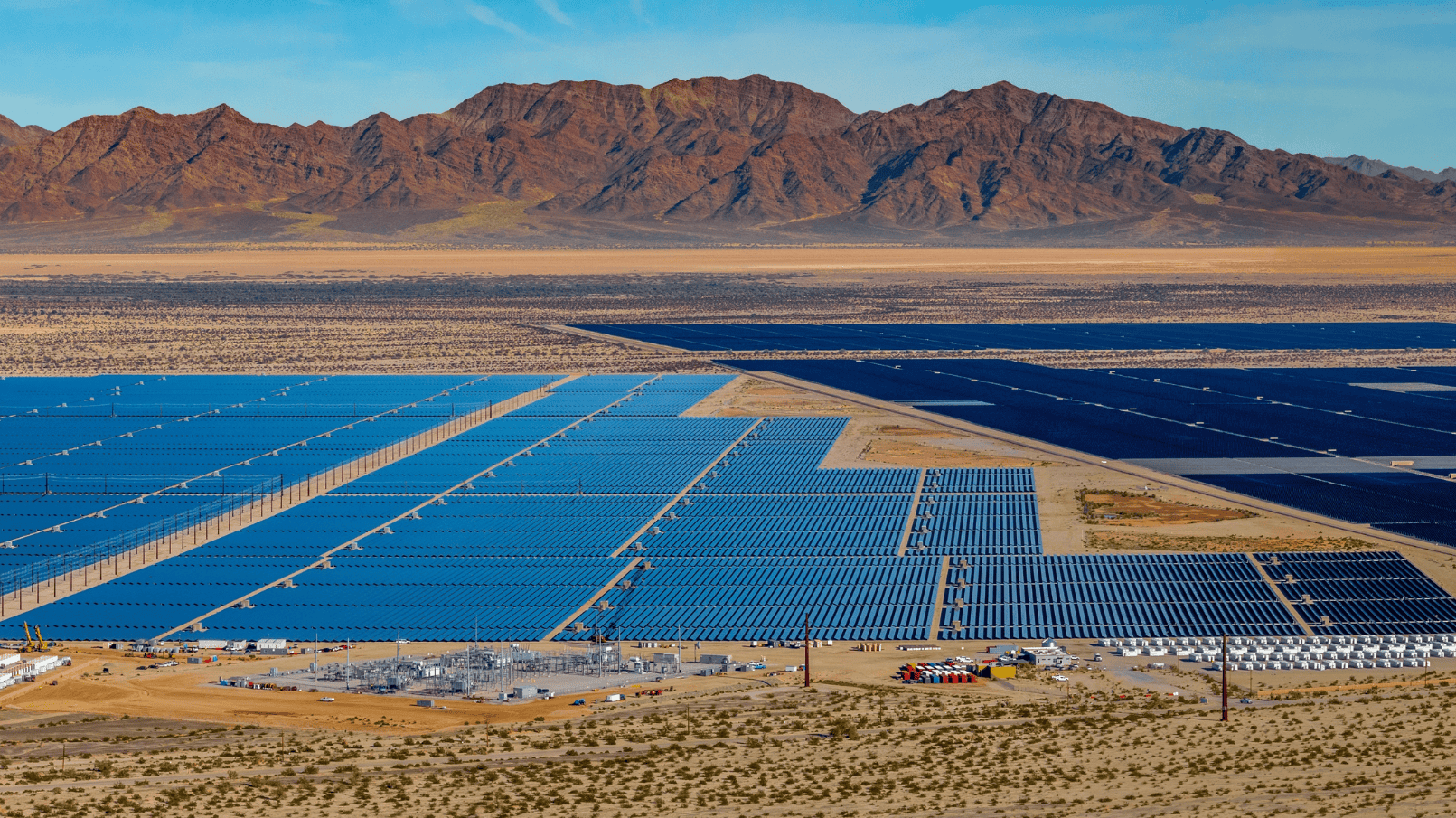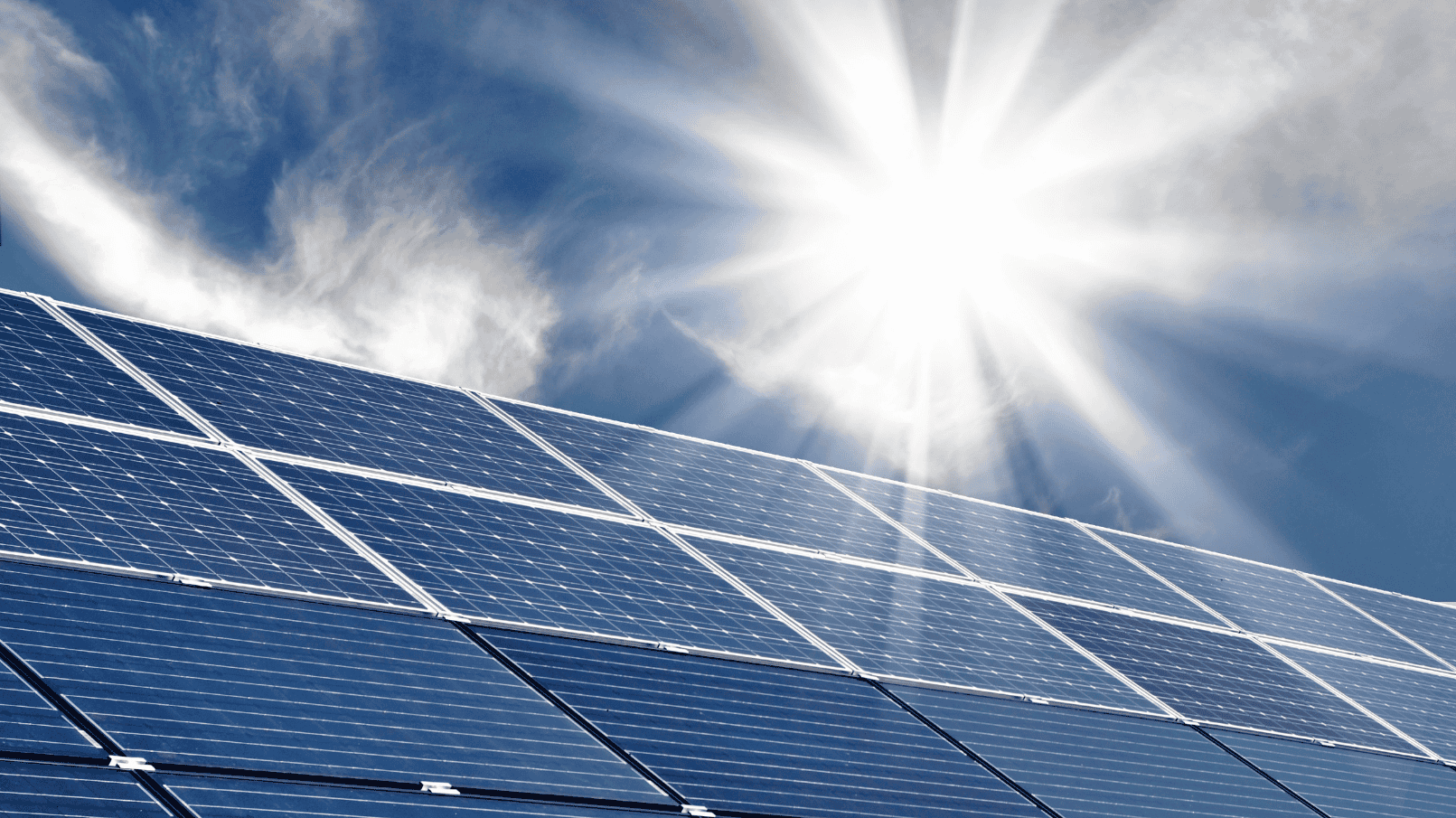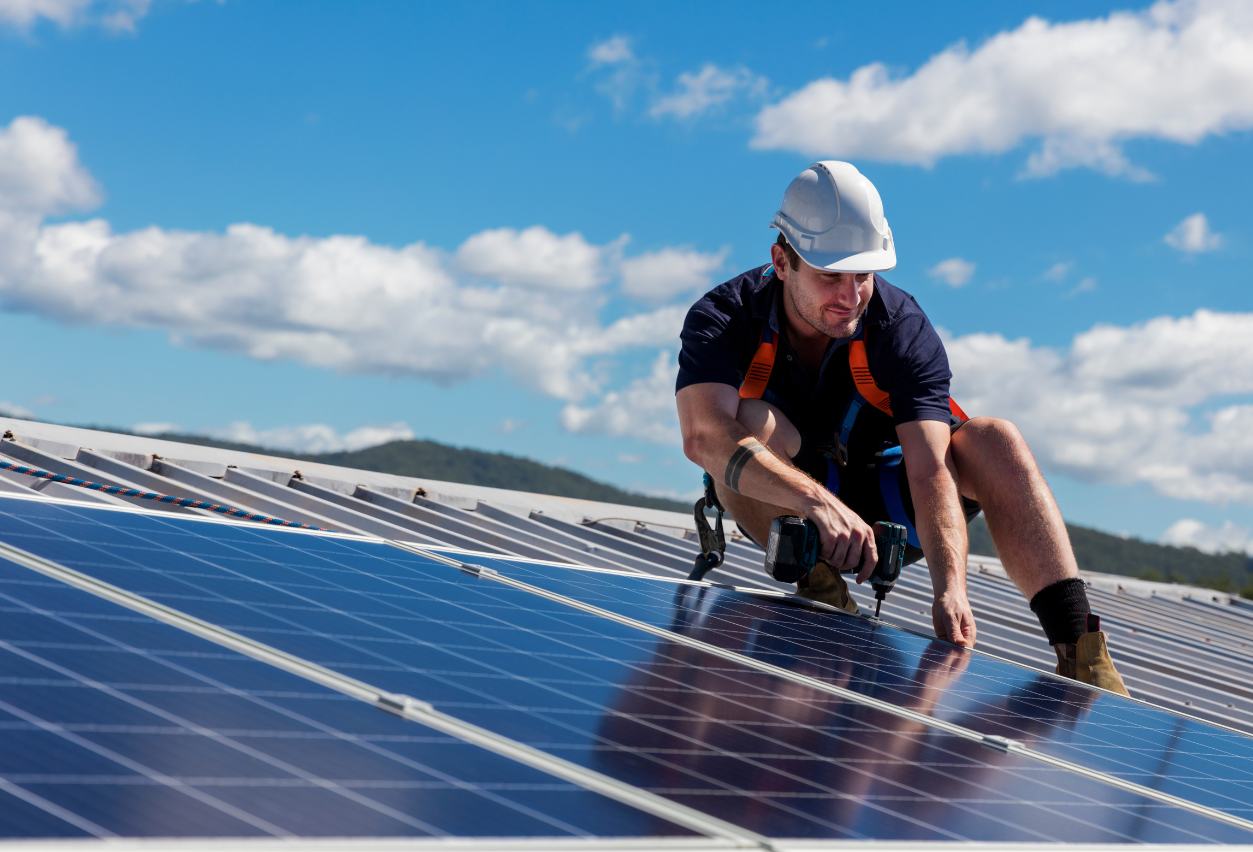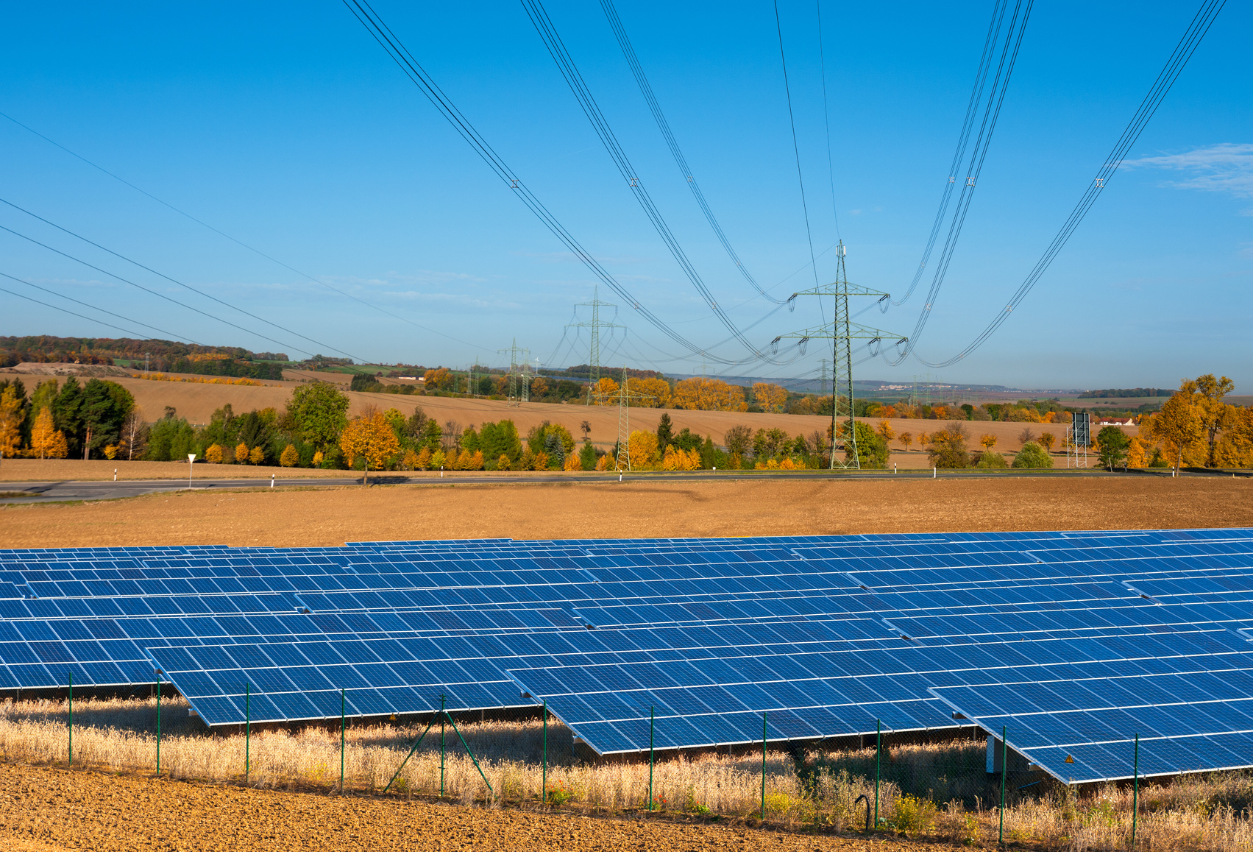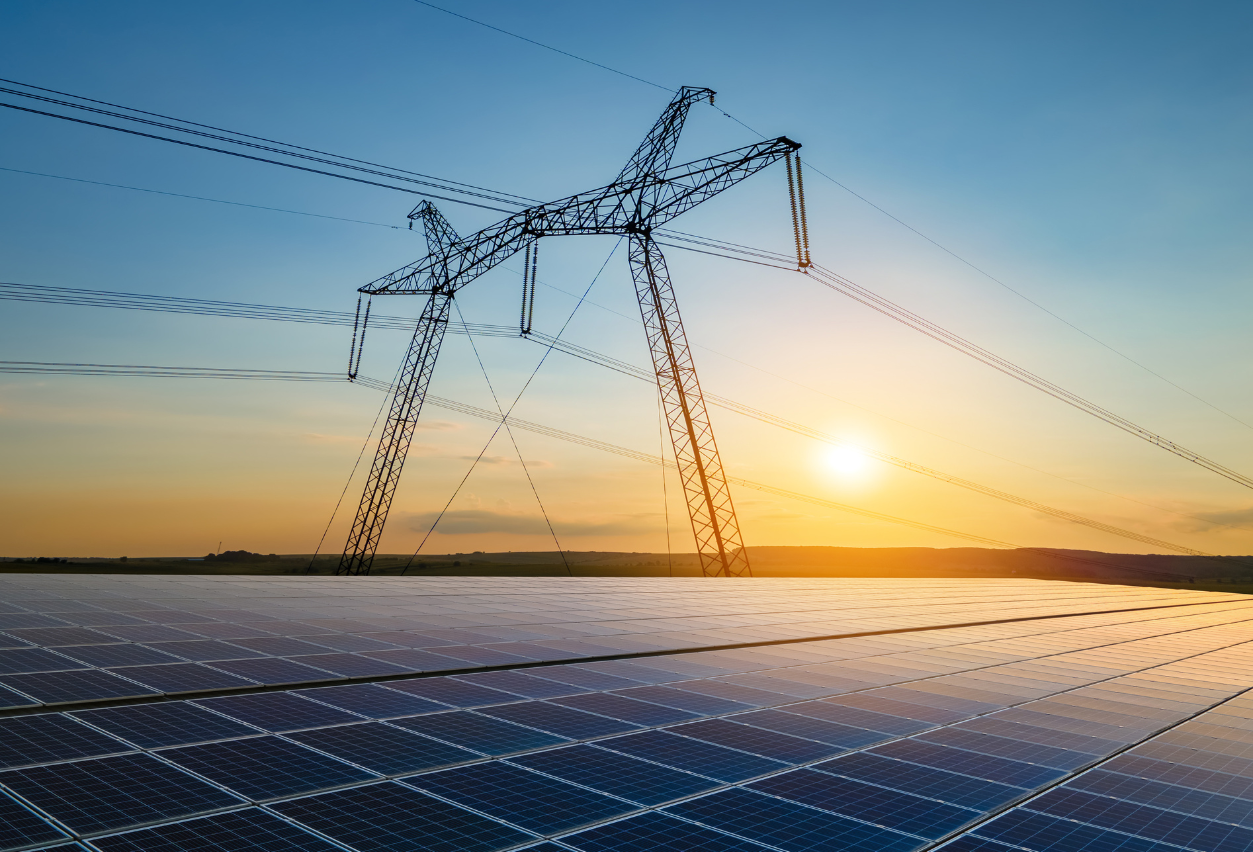Solar interconnection is the formal process of connecting a solar-generating asset to the electric grid. This allows solar systems to fully integrate and operate seamlessly within a larger electrical infrastructure and further advances the transition to a more sustainable energy system. Interconnection, however, is quite complex. The process is also different for behind-the-meter assets compared to front-of-the-meter assets.
This article aims to cover the process of solar interconnection, challenges for customers and solar developers, and ways to ensure a smooth integration with the electrical system.
How Does An Interconnection Work?
Solar arrays capture sunlight and convert it to electrical energy in Direct Current (DC) form. While DC power is ideal for batteries and small appliances, the electricity grid operates on Alternating Current (AC). Inverters tied to the solar arrays convert the DC power into AC and make it suitable for grid integration. In behind-the-meter solar projects, the AC current is sent through a net meter, which tracks the flow of electricity between the building, solar arrays, and the grid. In an in-front-of-the-meter system, the power from the solar system is interconnected with the electric grid directly, through a three-phase power substation. This is accomplished through a grid-tie connection.
Why Solar Interconnection Matters
Solar interconnection is the cornerstone of modern renewable energy systems. By connecting solar energy systems to the grid, interconnection allows behind-the-meter solar customers to access dependable energy from the grid while simultaneously offsetting usage through solar production. For larger, utility-scale projects, interconnection helps solar assets support wholesale electricity generation and grid stability.
Key Benefits of Solar Interconnection
- Net Metering Opportunities: Interconnection allows customers with on-site solar to sell excess energy back to the grid for credits on their electricity bills.
- Enhanced Grid Resilience: Distributed energy solar resources and utility-scale systems help strengthen the grid and contribute to additional electric capacity for system operators.
- Cost Savings for Customers: By reducing reliance on traditional energy sources, interconnection enables significant opportunities for end-user customers. Programs such as community solar, which would not be feasible without successful interconnection, allow customers to participate in clean energy generation without having to install on-site solar.
Interconnection Agreements
An interconnection agreement is a formal contract between a solar customer and the utility company, or a solar asset owner and the Regional Transmission Organization (RTO) or Independent System Operator (ISO). These agreements detail the terms and conditions for connecting a solar energy system to the electrical grid and ensure that the solar system operates safely and efficiently while adhering to regulatory standards, creating a clear framework for the interconnection process.
Key Components of an Interconnection Agreement:
- Technical Requirements: Each agreement includes specifications for system design, equipment compatibility, and connection protocols to ensure grid stability and functionality.
- Safety Standards: Safety guidelines are provided in the agreement to prevent hazards, protect utility workers, and maintain the reliability of the electrical system.
- Responsibilities of Both Parties: Defined roles for the customer/asset owner and utility/system operator are outlined in each interconnection document. These include installation terms, system testing protocols (both hot and cold commissioning), maintenance requirements, and communication protocols.
Solar Interconnection Process (In-Front-Of-The-Meter)
In-front-of-the-meter solar assets are not tied directly to a customer’s load but are integrated directly into the wholesale transmission system. The process to integrate a large, utility-scale solar system into the power system is quite complex and arduous. Here are the high-level requirements for in-front-of-the-meter solar interconnection:
Step 1: Feasibility Study
First, a feasibility analysis is needed to assess the project’s technical and economic viability. This step evaluates site suitability, grid capacity, and proximity to existing ISO/RTO infrastructure. During this step, an interconnection point is determined and potential grid upgrade requirements are identified.
Step 2: Interconnection Application
Next, a formal application is submitted to the ISO/RTO and utility company, including detailed project specifications such as system size, capacity, equipment, and the proposed interconnection point.
Step 3: Initial Screening and Queue Position
After application submission, the ISO/RTO assigns the project a position in the interconnection queue based on the application date. The project undergoes an initial screening to ensure it aligns with regional capacity and technical requirements.
Step 4: System Impact Study (SIS)
The ISO/RTO conducts a detailed system impact study (SIS) to assess the solar project’s effects on system stability, potential congestion, and the need for infrastructure upgrades to support the proposed generation. This analysis also provides cost estimates for required infrastructure changes.
Step 5: Transmission Facilities Study
This study focuses on determining specific transmission infrastructure upgrades needed to connect the solar asset to the grid. It outlines engineering requirements, estimated costs, and timelines for new or enhanced transmission facilities.
Step 6: Interconnection Agreement Execution
An interconnection agreement is finalized with the ISO/RTO that specifies financial obligations, construction timelines, and technical standards. This contract also defines responsibilities for grid upgrades and ongoing asset maintenance.
Step 7: Permitting and Regulatory Approvals
All necessary permits are obtained, including environmental, local zoning, and construction approvals. This step ensures the project meets all legal and regulatory requirements.
Step 8: Construction and Installation
The solar asset is built and integrated with grid infrastructure. Coordination with the ISO/RTO is critical during this step to ensure the construction aligns with regulatory and interconnection standards.
Step 9: Testing and Commissioning
Once construction is complete, system testing is done to verify compliance with interconnection agreements and grid standards. This stage includes both hot and cold commissioning and synchronization tests to ensure seamless integration of the solar asset with the grid.
Step 10: Permission to Operate (PTO)
PTO is granted by the ISO/RTO authorizing the system to begin operations. This confirms all requirements have been met, and the system is ready to supply energy to the grid.
Step 11: Ongoing Operations and Monitoring
At this phase, the system needs to be operated continually to ensure seamless integration. The system also is required to provide real-time data to the ISO/RTO via RTU/Skada protocol for grid balancing, and ancillary and energy market participation.
Step 12: Market Participation (Optional)
Assets have the option to enroll in ISO/RTO programs for energy, capacity, or ancillary markets to maximize revenue opportunities. By participating in these markets, solar developers can sell energy generation, contribute to grid stability, and capitalize on peak pricing strategies.
Solar Interconnection Process (Behind-The-Meter)
Behind-the-meter solar assets are tied directly to a customer’s utility meter, typically a net meter installed by the local power company. These types of systems generate power for direct customer consumption. The interconnection process occurs with the local utility company and follows different steps.
Step 1: Application Submission
Describe the interconnection application process and the information required, such as system size, design, and installer details.
Step 2: Review and Approval
Explain how utilities review the application to ensure compliance with grid standards and safety protocols.
Step 3: Installation and Inspection
Discuss the importance of certified installers and utility inspections to verify compliance.
Step 4: Permission to Operate (PTO)
Define PTO as the final step, where the utility authorizes the solar system to feed energy into the grid.
How Long Does Interconnection Take?
The solar interconnection process typically takes between 3 to 12 months, depending on the complexity of the project, the interconnection cue, and the specific requirements of the utility and ISO/RTO. Smaller, behind-the-meter projects with straightforward interconnection needs may be completed on the shorter end of this timeline, while larger, in-front-of-the-meter systems may require additional time for evaluations and approvals.
Several factors can contribute to delays in the process. High application volumes, especially in regions with increased solar adoption, can create backlogs for utilities and ISO/RTOs. Limited utility resources, such as insufficient staffing or outdated infrastructure, can further extend review periods. Additionally, navigating regulatory hurdles, such as compliance with state and federal standards or securing permits, can add complexity and lengthen the timeline. Understanding these potential challenges and working with experienced solar developers can help streamline the process and minimize delays.
Does The Interconnection Application Cost Money?
Yes, the interconnection application typically involves fees that vary based on the size of the solar system and the project’s location. These fees are typically several thousand dollars and cover the administrative costs of processing the application and reviewing the system’s compliance with grid standards.
In addition to application fees, there may be other costs associated with the interconnection process. For instance, some projects require grid upgrades, such as transformer replacements or transmission line enhancements, to support the additional energy capacity. Other expenses could include the installation of advanced metering equipment to measure energy flow between the solar system and the grid. These additional costs vary by project but are critical to ensuring a smooth and reliable connection to the electric network. Working with an experienced solar developer can help identify and estimate these expenses early in the planning process.
Strategies For Navigating The Interconnection Cue
The solar interconnection process can be complex; however, solar asset owners and developers can take proactive steps to simplify the process and ensure smoother grid integration. Here are some practical tips for navigating the complexities of interconnection:
Work With Experienced Solar Developers
Partnering with a knowledgeable and reliable solar developer ensures your project will be compliant with technical and regulatory standards. Their experience can help you to expedite the interconnection process.
Ensure All Documentation Is Complete and Accurate
Double-check application forms, engineering designs, and supporting documents from local authorities to avoid delays caused by missing or incorrect information.
Stay In Regular Communication
Proactively engage with the utility or ISO/RTO throughout the process to track progress, address any real-time concerns, and ensure timely approvals.
Plan For Delays
Build flexibility into project timelines to account for unexpected setbacks, such as application backlogs or transmission infrastructure upgrade requirements.
Understand Local Regulations
Familiarize yourself with state and local zoning and interconnection policies. This will help to anticipate requirements and reduce unexpected delays.
Consult With Experts
Engaging experts or consultants who specialize in interconnection can help identify potential bottlenecks and create strategies to navigate them effectively.
Need Help With Your Solar Project?
Solar interconnection is an important but complex aspect of any solar project. At Genie Solar Energy, our team has decades of industry experience navigating complex interconnection applications and helping large solar projects come to fruition. Whether you are a solar investor looking to build a community solar farm, or a land owner seeking to maximize the value of your parcel through a solar lease, our team can help. Contact us today to learn more or to gain expert guidance on the solar development process.

